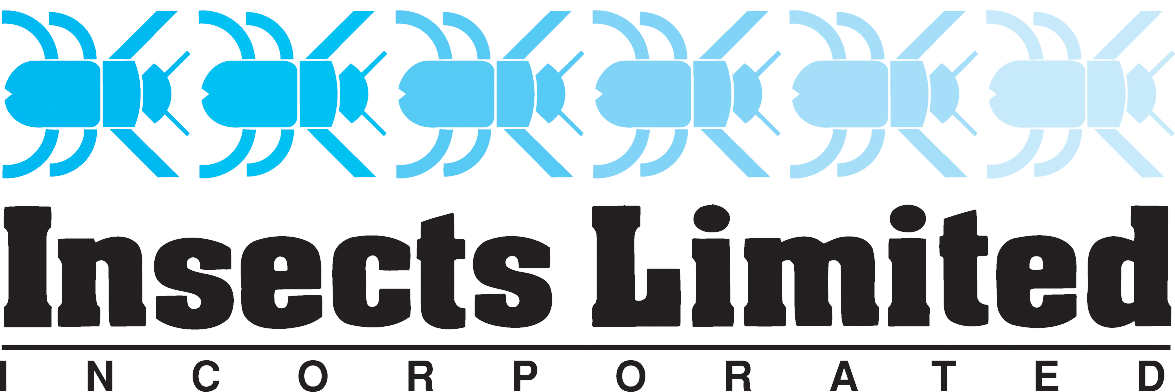Dermestid Larvae (Dermestidae)
Dermestid Larvae Traps
Dermestid Larvae Description
Adults: Many dermestid beetles attracted by the dermestid larval lure will be small, 1-3 mm (0.04-0.1 inches) long. Beetles can vary in color from black/brown to yellow/orange with a variety of markings and patterns depending on species. Most adult dermestid beetles live several months.
Eggs: Most dermestid eggs will not be visible without microscopic examination.
Larvae: Larvae can vary in size but are often larger than the adults. Larvae have varying patterns and density of stiff hairs (setae) on the body and tip of the abdomen.
Pupae: Pupal cases are similar in size to the last larval instar and are often composed of the last shed skin of the larvae.
Dermestid Larvae Life Cycle
Many dermestid species live outdoors and readily enter structures in search of food. Adults are adept at finding small amounts of food materials, textiles, and dead insects to lay their eggs.
Many dermestid larvae can go through protracted larval periods of 3 to 18 months and some dermestid pupae can enter an extended, hibernation-like, state called diapause which is part of the extended larval lifespan strategy.
Dermestid Larvae Damage & Detection
Dermestid larvae can feed on a wide variety of stored foods including cereals, candy, flour, fishmeal, noodles, dried spices, nuts, dead animal carcasses (drier stages), and pet foods.
They can also feed on some textiles, furs, feathers, and dead insects. The larval stage prefers to hide in dark areas where food is stored, including processed and packaged foods, or in cracks and crevices where waste food has accumulated.
The use of dermestid larval monitors and inspections can determine the location and degree of infestation, as well as draw larvae away from other items upon which they are feeding.
Dermestid Larvae Facts
Similar species include many other Anthrenus, Anthrenocerus, Attagenus and Trogoderma species.
Dermestid larvae have hairs on their body called setae that can cause gastrointestinal irritation in infants, children, and at-risk individuals. They may also cause an allergic reaction.
Dermestid Larvae Monitoring Tips & Tricks
Dermestid Larvae Monitoring Guidelines
Lure
Dermestid Larval Attractant contains a food attractant effectively attractive to both male and female Varied carpet beetles and Black carpet beetles as well as the larval stage of the same insect. Dermestid Larval Attractant can be stored in any temperature and has an effective attractiveness if the pellet maintains its structure and has not gotten wet.
Lure Storage
Since the attractants are of animal origins it has potential to spoil under hot conditions. For long term storage the traps should be refrigerated. All the traps are contained within polyethylene bags to help with preservation of odors. It should also prevent odors from escaping into the refrigerator. It is a best practice to keep the Dermestid Larval Attractant in cool storage at 16°C (60°F) or in a freezer for extended storage to protect from moisture and condensation. However, this practice is not required.
Trap Designs Used with Lure
The traps are the size of a business card with circular, 0.5 inches (12 mm) cartridges attached to contain the Dermestid Larval Attractant. These devices are not designed to capture and hold the larvae with sticky glues and should be used to discover if a target pest is feeding on the attractant.
Dermestid Larvae Traps
Dermestid Larvae Trap Placement & Use
Trap Placement Techniques
Food lure traps can be placed year-round but are especially recommended when temperatures exceed 12.5°C (55°F).
Dermestid larvae food lure traps are best utilized in areas that store items that contain natural fibers and stored foods such as wool, hair, feathers, furs, upholstered furniture (containing natural wools and leathers), food, grains, seeds, nuts, dried fruit, animal feed, or pet food.
Trap and Lure Maintenance
Replace food attractant lure when it is no longer whole, but has crumbled. Replace all lures in a location at the same time.
Do not cut the cap off the bullet lure. Do not stagger lure replacement over several weeks. Record date and number of catches to identify trending information.





